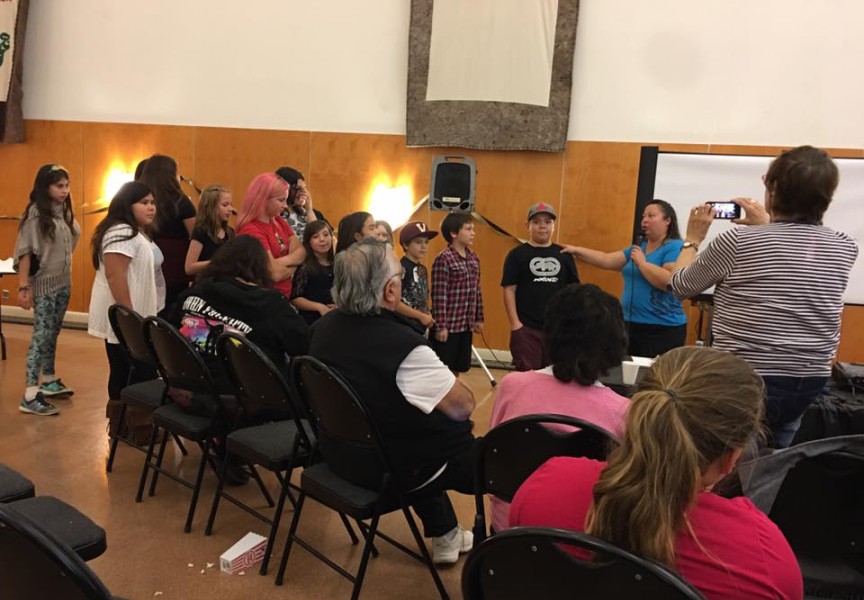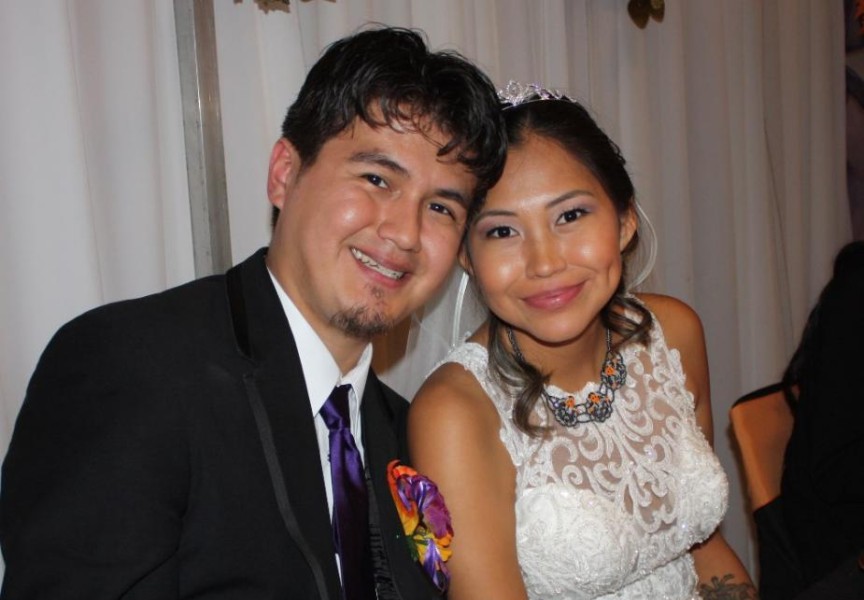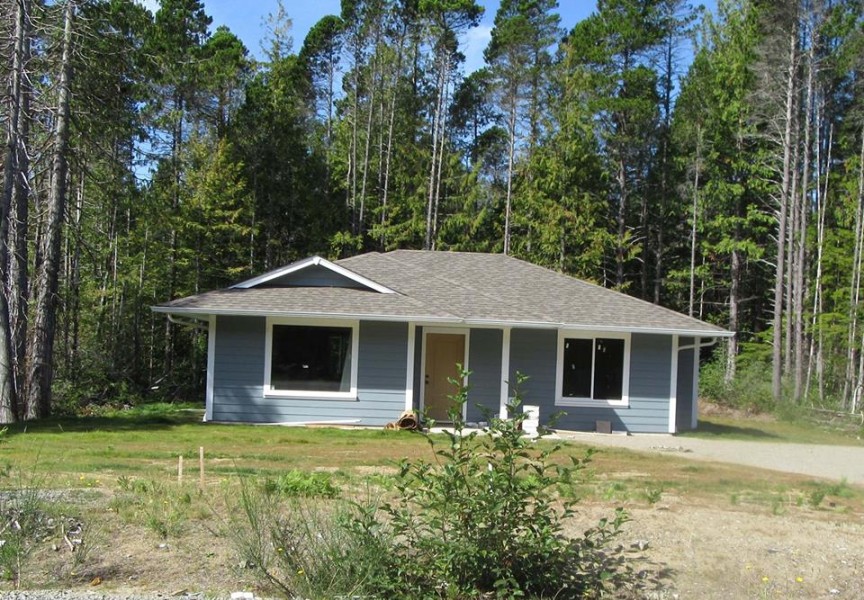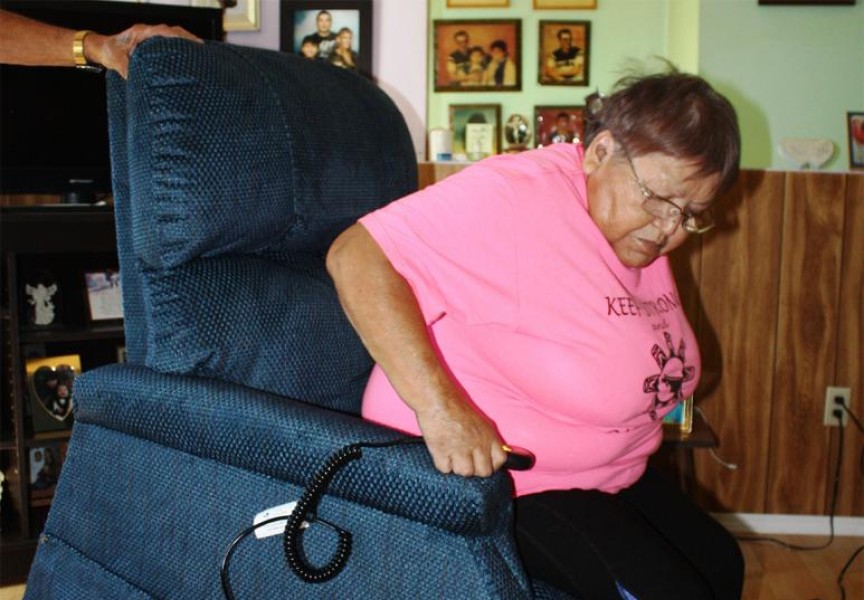A meeting was held March 15 and March 16 in Tofino to welcome home delegates representing the Clayoquot Action Society members who traveled to Norway in February to exchange information on farmed salmon in British Columbia, and express their opposition to salmon farms in Clayoquot Sound.
Among the delegates were John Rampanen from Ahousaht First Nation and his son Qwy atseek, age 13. Dan Lewis and Bonnie Glambeck, founders of the Clayoquot Action Society, were also delegates.
Levi Martin, elder and spokesman for Ha’wilth Nuukmis Robert Martin, and on behalf of the Tla-o-qui-aht Ha’wiih, welcomed meeting participants to Tla-o-qui-aht traditional territory. He acknowledged the work of Clayoquot Action Society and said he would keep wild salmon in his prayers. He said it was people’s responsibility to honor and respect what the Creator has provided to them.
In his opening remarks, Lewis welcomed participants to the unceded territory of Tla-o-qui-aht First Nation.
“We are working to protect the area from threat of mining, fish farming, oil tankers and pipelines,” Lewis said, with the goal of protecting wild salmon.
Clayoquot Action Society raised $24,000 for the trip. Delegates went to Norway to meet with politicians, environmentalists and scientists to exchange information and to make them aware of the society’s concerns regarding the impacts of fish farming in Clayoquot Sound.
Rampanen’s purpose in going to Norway, however, was to focus on learning about the Indigenous peoples there.
Rampanen and his son spent eight days in Norway with the Sami people Feb. 4 to Feb. 12 . There are two groups—Inland Sami, who are reindeer herders, and the Coastal Sami people who are connected to the ocean. The coastal Sami people are very similar to Nuu-chah-nulth, Rampanen said.
The Coastal Sami almost lost their dialects of the Sami language, and their culture practices are not as intact. The Inland Sami still have their culture and language firmly in place.
For John and Qwy atseek, the importance of making cultural connections with the Indigenous people was the highlight of their trip. The main effort of the Sami people has been to stop mining, as mining has had the biggest impact on their land and livelihood. Fish farming is currently a lower priority on the Sami peoples’ list, as mining has a much more immediate and negative impact, he told Ha-Shilth-Sa in a phone interview.
Rampanen said he is concerned that environmentalists are using Indigenous people as tokens to further their own agendas. His focus, instead, is on establishing connections between Indigenous peoples and the revitalization of language, spirituality and cultural practices, which are the true strengths that will help maintain and protect all life within our territories.
The Sami people were very welcoming and hospitable and the trip was life changing for Qwy atseek. John and his son learned how to herd reindeer, and John plans to take his family back to Norway one day.
There is a huge number of fish farms in Northern Norway—hundreds and hundreds, Rampanen said.
About 90 per cent of fish farms are owned by companies from Norway, meeting participants were told, with Cermaq being the largest. Cermaq has 15 salmon farms in Clayoquot Sound, with an intention to expand their operations.
During their meetings in Norway, delegates spoke of how salmon are very important to First Nations people, as well as all other living animals in the forests and ocean. Trees need nitrogen. The nitrogen comes from the fish, brought by bears, eagles and wolves as they feed. Without salmon, the environment would be impacted.
Concerns also include sea lice, which can transfer diseases to fish. Farmed salmon opponents say fish farms are breeding grounds for sea lice because of the thousands of fish in small areas in net-cages.
Fish farms are on the direct route of wild salmon migration.
Meeting participants heard there is an epidemic of sea lice occurring in Norway. Chemicals are used to kill the sea lice, but the sea lice have become resistant, the meeting was told. The concern is that crustaceans will now be impacted by the chemicals used.







